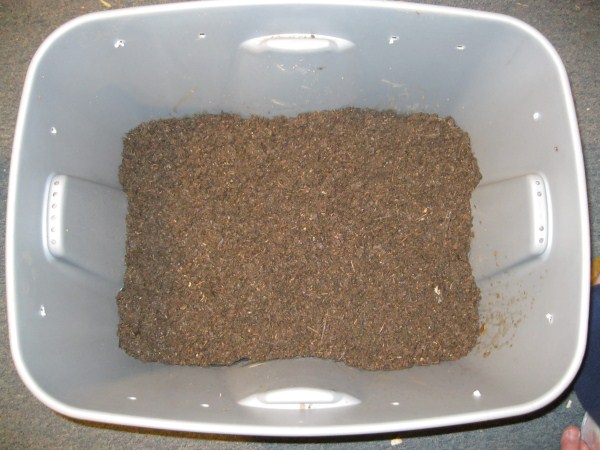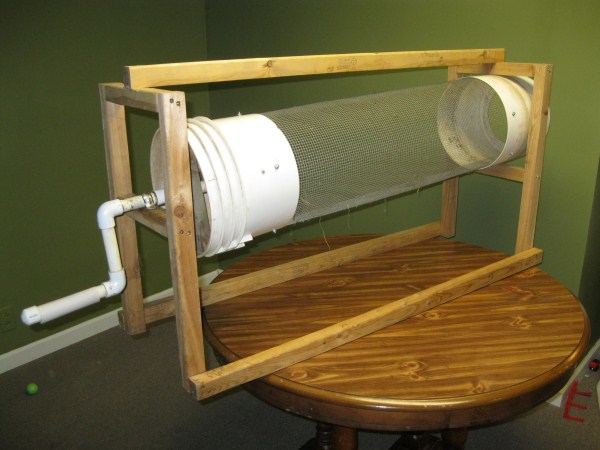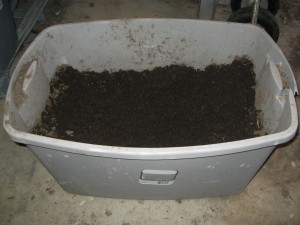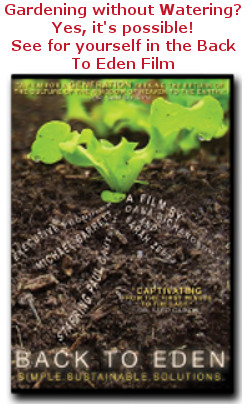As I discussed in the last post, raising worms to produce compost is
- fun,
- easy and
- a great source of high-powered, all-natural, fertilizer for your garden and seedlings.
Now that you have your worm bin made, it’s time to put in the bedding and worms. In this post I’ll talk about the bedding. I’ll discuss the worms in the next post.
For bedding, there are many options you can use. A few options I’ve tried include…
- 1 inch shreds of newspaper (better to not use the colored ink paper)
- chopped up leaves
- sifted leaf mold, and
- sifted peat moss.
My personal favorite is sifted leaf mold. It’s free, easy for me to gather off the forest floor and adds additional nutrient variety to the final product. It is also easy to handle—if you don’t mind getting your hands dirty—and it adds a fairly fine texture to the compost. The worms love it too. You may need to check the PH level if you use really acid leaf mold. Worms like pH levels between 6.0 to 7.0.
The shredded newspaper is also free if you use your left over paper. But I hate having to shred the paper and weed out the colored ink that is almost on every page of newspaper nowadays. I don’t like having the colored ink in the compost because I don’t know exactly what chemicals they use in the ink, even though they may say it is natural ink. Also, since the bedding will need to be moist, I don’t like having to mess with the wet newspaper which is harder to keep from clumping.
Chopped leaves are okay but I’d rather not have to chop them and mess with the bigger pieces.
Sifted peat moss is also great bedding. It is the bedding of choice for those that want really fine compost or want to sift the compost for premium worm castings. The problem I have with peat moss is that it can be very expensive—definitely more expensive than free leaf material or newspaper. I’m all for using free things as much as possible. You’ll also need to check pH when using peat moss since it can be acidic as well. The peat moss to use is the Sphagnum variety.
When using leaf mold or peat moss, you need to sift it to remove the larger pieces to obtain a fine textured bedding. I like to use my homemade compost sifter to sift the bedding. I found this design from a man on YouTube and it works really well. I cannot remember his name. Maybe one day I’ll find him again and be able to acknowledge his work.
In any case, I use ¼ inch hardware cloth as my screen which provides a really good bedding size. It also makes a good all-purpose sifter for compost. When I discuss sifting compost in a later post, you may want to use a 1/8 inch mesh for more fine compost or premium castings. But that is for another time.
With your bedding sifted, you will now need to soak it in water to get it really moist. The worms need moist bedding to thrive and reproduce and be most productive. I follow these steps to get the bedding moist:
- fill up a large rubber container with the bedding, about 2/3 full (this will last for a quite a while depending on how many bins you have), then
- fill it with water and mix it together
- add additional water if needed to ensure it is completely soaked, and finally
- let it sit for about a day to ensure it is thoroughly moist.
Note that peat moss takes a lot of soaking and mixing to get it thoroughly moistened. That’s another reason I prefer leaf mold. It takes less effort to get it really moist. I’m all for less effort.
Caution: You don’t want your bedding dripping wet. Otherwise, the worms may not get enough air to breath and they will try to escape your bin. You want the bedding moistened to the level of a damp sponge or a little more. If you get too much water in your bedding, you can let it dry out for a couple of days or wring out the water for immediate use.
Your bedding is now ready to put in your bin. Add about 3 to 4 inches in the bottom of the bin and then add your worms. I’ll talk more about the worms next time.
What beddings have you tried that work well for you?





